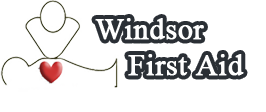
Types of angina
There are different types of angina, each with dissimilar symptoms and require different treatments. The four major types of angina are as follows:
- Stable angina
- Most common type
- Has a regular pattern (regularity, intensity, and risk factors)
- Pain lasts several minutes (or until medication is taken or rest)
- Suggestive of myocardial infarction in the future
- Unstable angina
- No regular pattern
- May be more frequent and more intense than stable angina
- May occur with or without physical action (not necessarily relieved by medication or rest)
- Fatal and essential of emergency assistance
- Suggestive of myocardial infarction in the near future
- Variant (Prinzmetal’s) angina
- Rare
- Result of spasm in a coronary artery
- Severe pain and may occur even while at rest (can be relieved by medication)
- Generally occurs between midnight and early morning
- Microvascular angina
- Most severe and longest duration
- No medication can relieve
Diseases characterized by angina
Angina is a condition that millions suffer from each year. Although it is commonly associated with coronary heart disease, other conditions may also cause chest discomfort. However, not all chest pain or discomfort is angina. Some of the diseases in which angina may be present include:
- Pulmonary embolism
- Lung infection
- Aortic stenosis (aortic valve of the heart narrows)
- Aortic dissection (major artery tearing)
- Hypertrophic cardiomyopathy
- Pericarditis
Causes of angina
When there is plaque buildup in the coronary arteries, the arteries are narrowed and stiffened, hence decreasing flow of oxygen-rich blood to the heart muscle, resulting to chest pain. Plaque buildup occurs as follows:
- Cholesterol and other fatty substances aggregate on arterial wall
- Hard plaques form*
- Artery narrows
- Blood flow is reduced
*plaque buildup also increase chances of forming blood clots which can partially or completely block blood flow, leading to heart attack
Symptoms of angina
Apart from the most common symptom of angina, which is dull or sharp pain, discomfort, ache or tightness across the front part of the chest, other symptoms include:
- Referred pain or pain in the arms, shoulders, jaw, neck, or back
- Pain develops after eating meals
- Pain develops when bending
- Breathlessness
- Feeling sick
- Fatigue
- Burping
- Dizziness
Treatment for angina
- Assist the casualty into a comfortable position and reassure them.
- If a casualty is suspected of suffering from an angina attack, call paramedics.
- If they have medication with them, assist the casualty into taking medication.
- Check and monitor the casualty’s vital signs. Commence CPR if necessary.
The hints mentioned above cannot be substituted for actual first aid training. Understanding angina can be an efficient tool in first aid classes and CPR courses. Participants will learn to efficiently and rapidly recognize casualties of cardiovascular emergencies such as angina attack.

